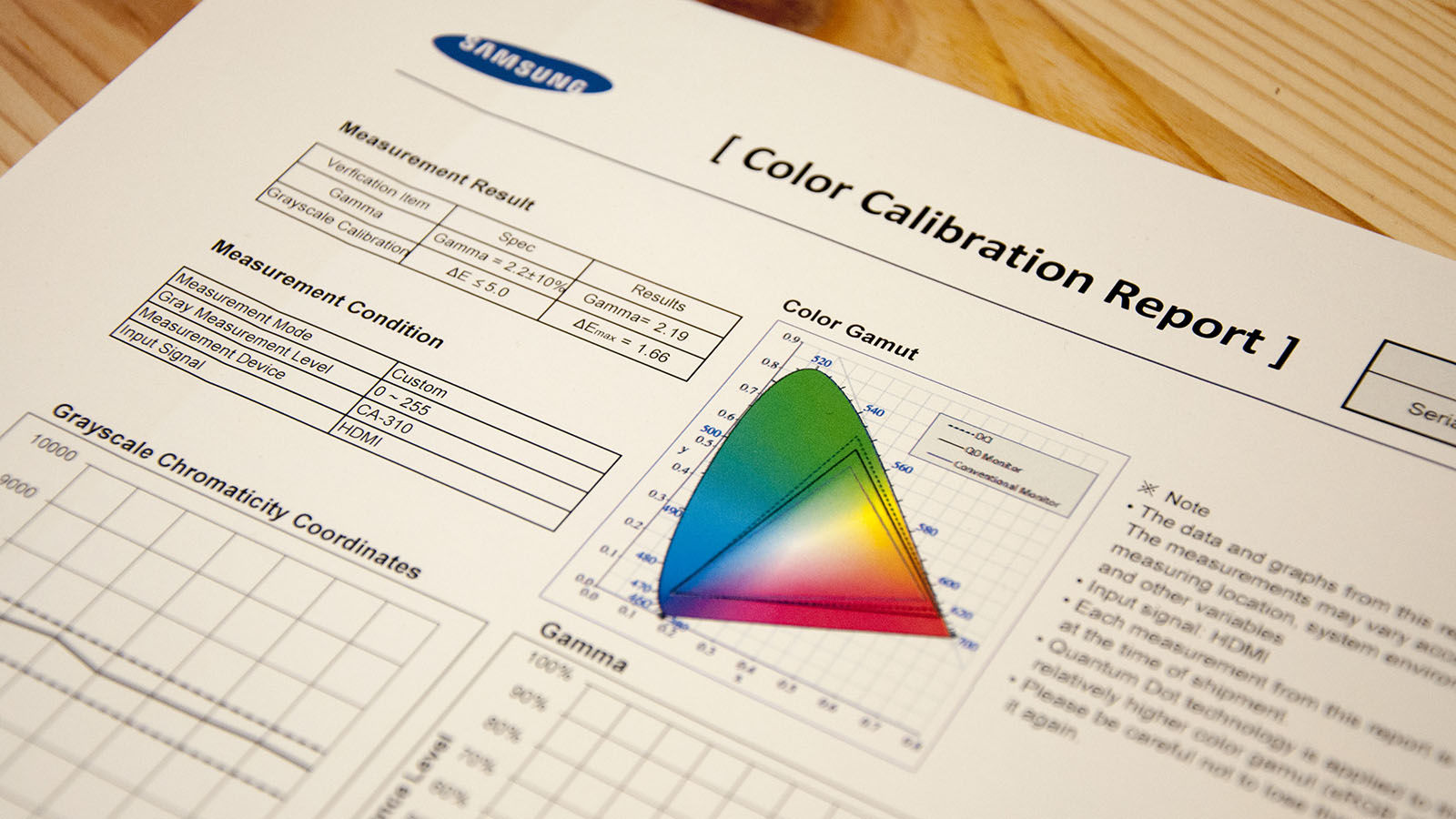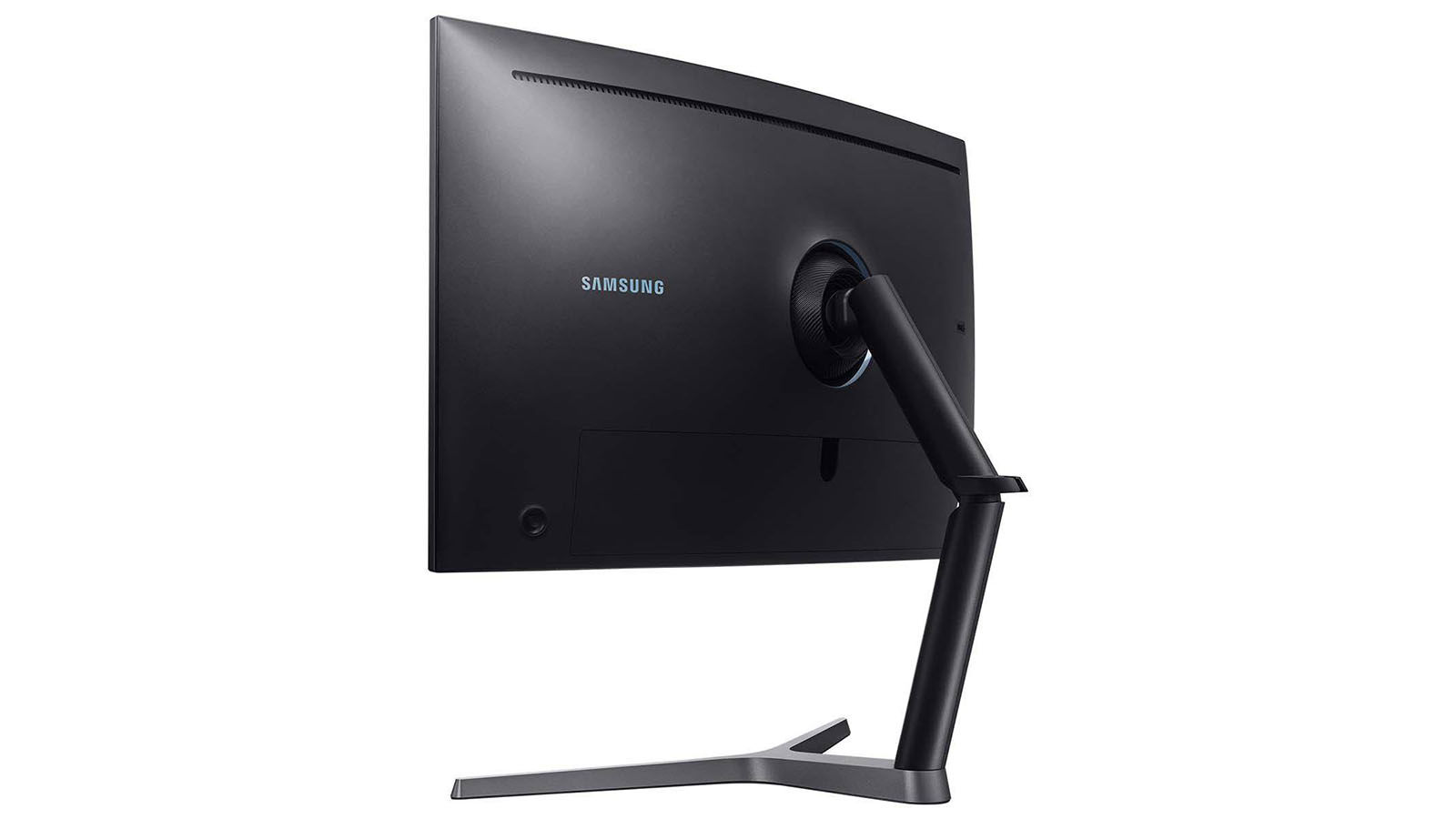A major part of that expenditure is the discrete video card, and there is little point in getting a really good one if your monitor can only handle 60Hz – you can take a look at the best monitors of 2017 here. For those that want to tick almost every box in their gaming PC checklist, Samsung has created the C32HG70. A 32” 1800R curved panel that can handle a 144Hz refresh with FreeSync, uses quantum dot technology for amazing colours and is even HDR10 compliant. Is the Samsung 32″ C32HG70 just too good to be true?
Pricing and availability
At close to £700, this isn’t the cheapest 144Hz WQHD resolution screen around. Acer, Asus and BenQ all have models that offer greater resolution, and many offer NVIDIA G-Sync compatibility over AMD FreeSync. Curved FreeSync competitors are thin on the ground. LG has the 34UC79G, a 34” design IPS panel that’s less than £500, but without HDR or FreeSync 2. They also make the 34UC88 34″, an ultra-wide design with 3440 x 1440 resolution that’s also FreeSync, but that can only manage 60Hz. Acer has their more expensive Predator Z35 35” 200Hz panel with G-SYNC for £120 more. At the exact size, price and specification, there isn’t much that is directly comparable.
Features and Design
Samsung doesn’t normally do ‘striking,’ but their C32HG70 is a dramatic piece of design work where a sizeable screen is supported by what looks like an implausibly thin structure. While this arm doesn’t allow the screen to get too close to a wall, it does allow entirely free movement of the panel, including twisting to offer portrait mode, if so desired. Samsung includes a VESA mounting plate if you wish to put it on the wall or use a support arm, maybe to free up desk space. Where the arm connects to the rear of the panel, there is an RGB LED ring of light, that’s meant to cast colours behind the screen where the customer can’t see them. Both Asus and Samsung have done this recently, and it makes little sense to us. A more rational feature is the lack of an external power pack, leaving all the technology contained within the panel, just the way it should be. For external inputs provide the choice of HDMI 2.0 or Display Port 1.4a. It is critical that both these inputs are those numeric versions. As sending 144 frames per second of HDR enhanced data to a screen of this resolution requires bandwidth than previous levels, like HDMI 1.4, offered. Along with the video inputs, Samsung also provided audio intercept for headphones and a USB 3.0 hub for peripherals. The design includes no speakers. Setting up is relatively painless, mostly because this screen has one of the nicest menu systems that we’ve yet to see on a monitor. It’s all operated by a small joystick placed on the lower right side at the rear, easily accessible from the front. Pressing this once brings the menu up, and then you can navigate to whatever modification you would like to make and press it again for a change. Compared with some of the horrible four and five button exercises we’ve seen elsewhere, this is a massive improvement. Through the menu system, you can select game modes for particular types of titles along with reviewing the current settings, all presented via a slick interface. What is particularly useful is that you can set the system to alert you to mode changes, and if the screen goes into HDR, for example, it will mention that that in a brief overlay graphic. In summary, it has the looks and the features, but can it deliver on its technical promises?
Performance
The performance of this screen is in a word, stunning. Over the past year we’ve seen some amazing gaming screens, but nothing like this. However, we did have some issues testing the contrast range of this screen using our colour calibrator. In short, the dynamic range exceeds our calibration sensors ability to track it correctly. Thankfully, Samsung does a full calibration test for each C32HG70 they make and prints the results off to include in the box. What’s interesting about this data is that there is some variation from screen to screen, and this is deviation is reflected provided numbers. Therefore, instead of quoting a precise percentage, Samsung more realistically say that AdobeRGB is typically 92% with a minimum of 88%, and equally NTSC 88% typical to 84% minimum. But, the numbers that will cause a mild stir are the sRGB ones, with 125% typical and 120% minimum. Surely more than 100% is nonsense? Well, in this rare instance it isn’t, because the scope of sRGB is a narrow limited within the gamut of colours human eyes can detect, and this screen can represent more of the visible range. That said, we’re not sure if those working with colour would be attracted to this design, being a curved panel. For gaming the situation is clearer, as the high static contrast of 3000:1 typical to 2400:1 minimum makes gaming imagery spring out of the screen, and you can make it look even more amazing if you use HDR mode. In addition to the ordinary contrast mechanism, Samsung also introduced a ‘local’ backlight control to enhance the scope of light to dark representation. Sadly, what they won’t tell us is the granularity of this system, i.e., how many addressable sections the screen can control brightness. However many it has, the system works well and avoids the obvious pitfalls of backlight adjustments that so many TV’s suffer. For those with an AMD video card FreeSync is available, and this is one of the first displays to be compliant with the new FreeSync 2 standard. With an AMD recent GPU, the discrete card can directly control the refresh, effectively eliminating screen tearing up to a frame rate of 144 fps. FreeSync 2 is almost like an additional layer to FreeSync that creates an AMD-optimised display pipeline for colour information, among other things. While not massively relevant to the current range of Windows game titles, the advent of FreeSync 2 should be very helpful to developers working on future ones. It has already been incorporated into some critical game engines, like the Unreal Engine and Unity.
HDR and other issues
Samsung promotes this screen as ‘HDR,’ and truly it is. Except that’s not the whole story, by a very long way. In short, HDR on the PC is a horrible muddle. It’s that way because originally Microsoft wasn’t interested, and so both AMD and NVIDIA both developed their own in-driver solutions to create HDR10 compliant output. And, they worked. Then Microsoft suddenly realised that HDR would be important to their Xbox One product range, and decided to retrospectively introduce it into Windows 10, overriding the work AMD and NVIDIA had already completed. As a result, selecting ‘HDR and Advanced Colour’ in the Display Settings the desktop looks appalling with nasty degraded colours and almost no contrast. Curiously, if you then install one of the few HDR games available the reward is this amazing high dynamic range mode, in all its gaudy glory. We installed the Forza 7 Demo (publisher Microsoft Studios), and when HDR mode is activated, it is like being poked in the eye with Vincent van Gogh’s palette knife. The fine irony of that title, is that the pre-rendered titles aren’t in 12-bit HDR colour and look distinctly washed out. Only when you enter the game graphics mode does HDR kick in and asserts gamut domination. How this silly desktop scenario passed QA at Microsoft is unfathomable. They need fix it right away since this is a mess totally of their creation. That might encourage more software engineers to do the work needed to support HDR, something that’s sadly lacking in the PC line-up at this time. For those that own a Microsoft Xbox One S or Sony PS4, the situation is marginally better, as this screen should work with any HDR empowered titles on those devices. Though, it is worth pointing out that some console games have good HDR colour grading and others do not. Game reviews often mention how well or badly the developers did with HDR, so take note. On Xbox One S currently has 18 HDR games and the PS4 at least 48 to choose from, shading the 22 PC titles we could find at this time. Another point that we should mention is the light output, and how it is technically below the threshold for HDR on the C32HG70. The quoted brightness is 350cd/m2, and the HDR spec demands 1000 cd/m2, about three times as much. It could be worse; the alternative HDR scheme Dolby Vision wants 4,000 nits, 12-bit colour depth, and the whole Rec.2020 colour space. But we digress. Rationalising the demands of HDR, if this screen generated that much light it would be painful experiencing emerging from a dark cave into bright sunlight playing a game. And, it would also use much more than the not insignificant 78 watts it already consumes, and generate plenty of heat in the process. Brighter screens are always better, but 1000 cd/m2 from a 32” panel might be unrealistic with current technology, whatever the HDR specification says.
Minor gripes
There are a couple of issues with this design, one those being more critical than the other. The one that most NVIDIA GPU owners will point out is that this monitor isn’t G-SYNC capable, as it only supports AMD’s FreeSync variable refresh technology. It will still work with an NVIDIA GPU up to 144Hz, but you don’t get the smoothness that comes with FreeSync mode. Until Samsung releases one with G-SYNC, at even greater cost, then there isn’t much that can be done about this, as AMD and NVIDIA appear no closer to agreeing on a common mechanism for achieving the same result. Another grumble is the plastic cover that Samsung designed to cover the port area of the screen. It fits perfectly. Or rather, it does when there are no input cables installed. Once you’ve installed the DP or HDMI cables, then it doesn’t go on so cleanly. Because the cables don’t flex enough, have enormous chokes on them, and they’re forced to go through a 90-degree turn in their first 5cm! We should also mention; these are the cables that Samsung includes with their monitor. A better plan would have been to include cables with L shaped ends, so they could fit in the channel this screen dictates. OK, that is a minor thing, but it irked us so we thought we’d mention it. Mark is an expert on displays, reviewing monitors and TVs. He also covers storage including SSDs, NAS drives and portable hard drives. He started writing in 1986 and had contributed to MicroMart, PC Format, 3D World among others.





